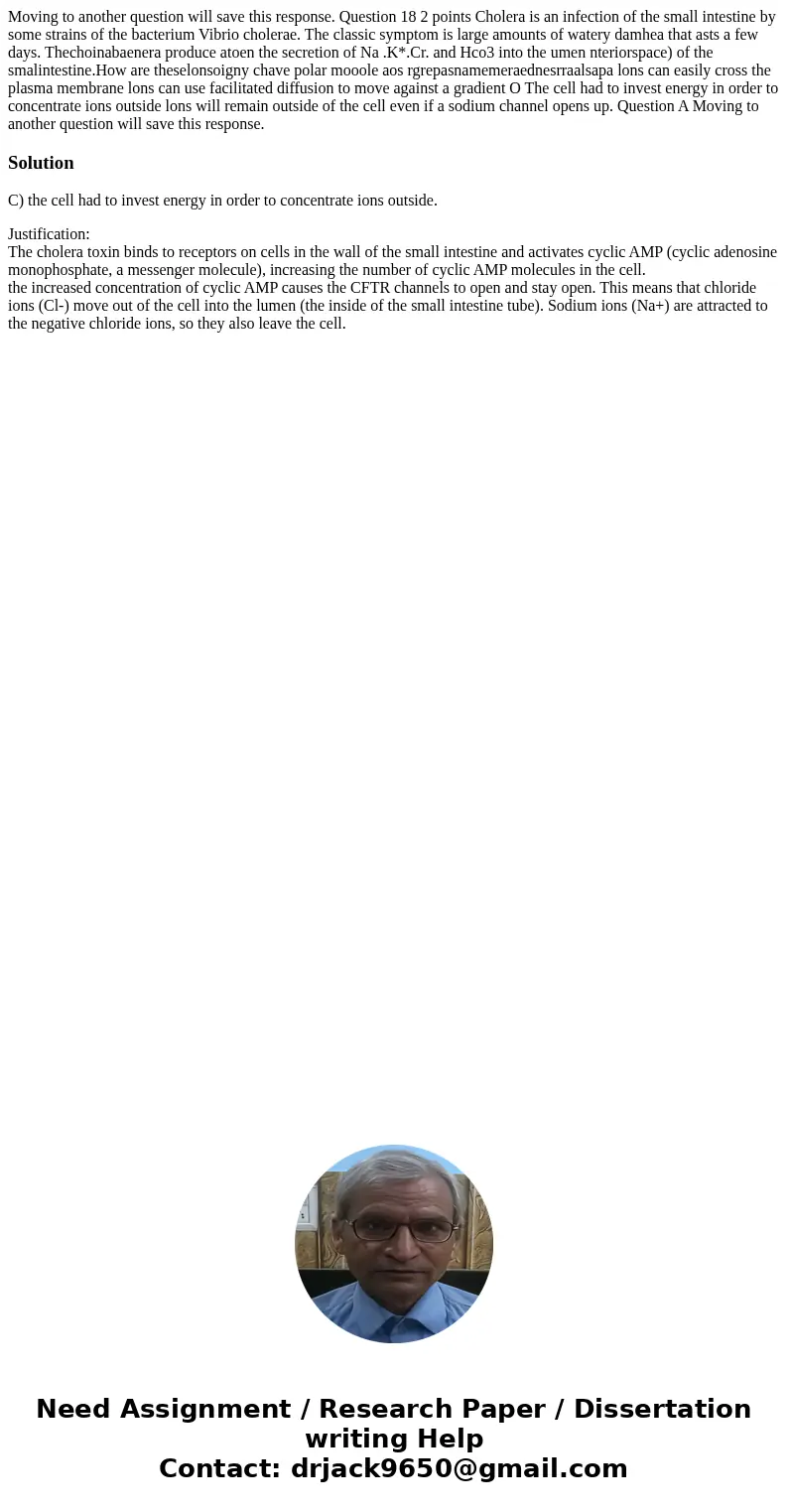Moving to another question will save this response Question
Moving to another question will save this response. Question 18 2 points Cholera is an infection of the small intestine by some strains of the bacterium Vibrio cholerae. The classic symptom is large amounts of watery damhea that asts a few days. Thechoinabaenera produce atoen the secretion of Na .K*.Cr. and Hco3 into the umen nteriorspace) of the smalintestine.How are theselonsoigny chave polar mooole aos rgrepasnamemeraednesrraalsapa lons can easily cross the plasma membrane lons can use facilitated diffusion to move against a gradient O The cell had to invest energy in order to concentrate ions outside lons will remain outside of the cell even if a sodium channel opens up. Question A Moving to another question will save this response. 
Solution
C) the cell had to invest energy in order to concentrate ions outside.
Justification:
The cholera toxin binds to receptors on cells in the wall of the small intestine and activates cyclic AMP (cyclic adenosine monophosphate, a messenger molecule), increasing the number of cyclic AMP molecules in the cell.
the increased concentration of cyclic AMP causes the CFTR channels to open and stay open. This means that chloride ions (Cl-) move out of the cell into the lumen (the inside of the small intestine tube). Sodium ions (Na+) are attracted to the negative chloride ions, so they also leave the cell.

 Homework Sourse
Homework Sourse